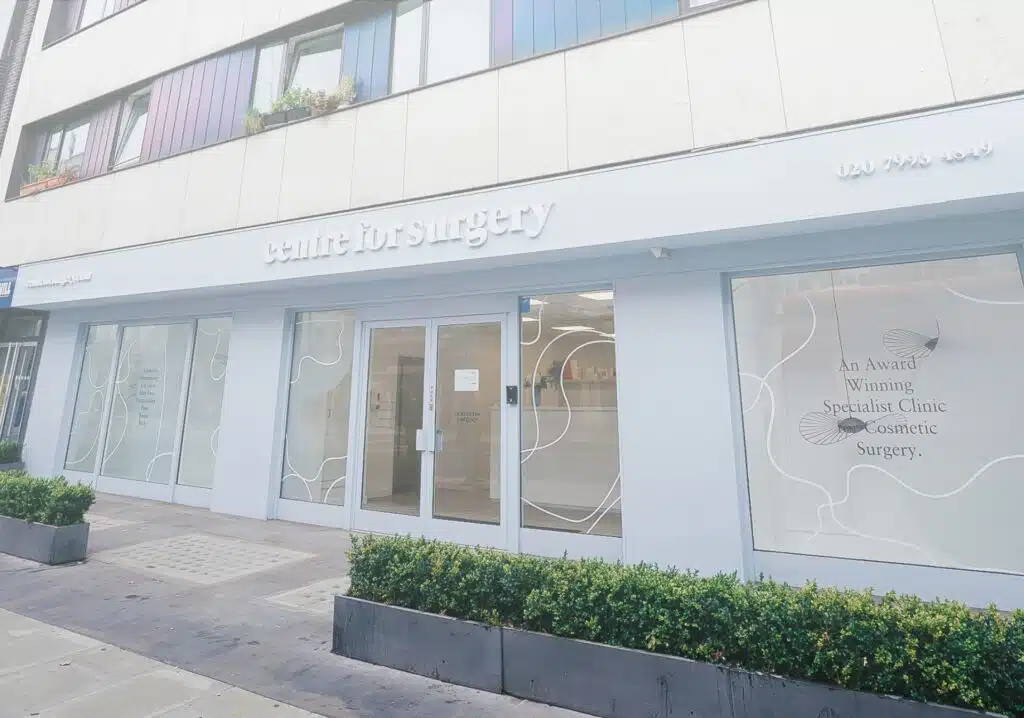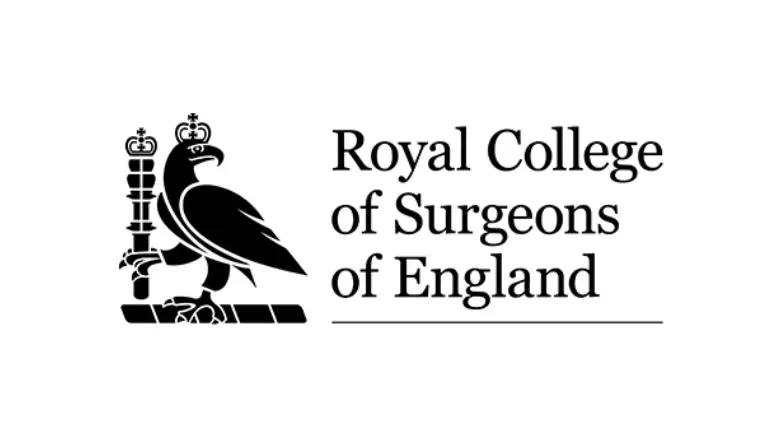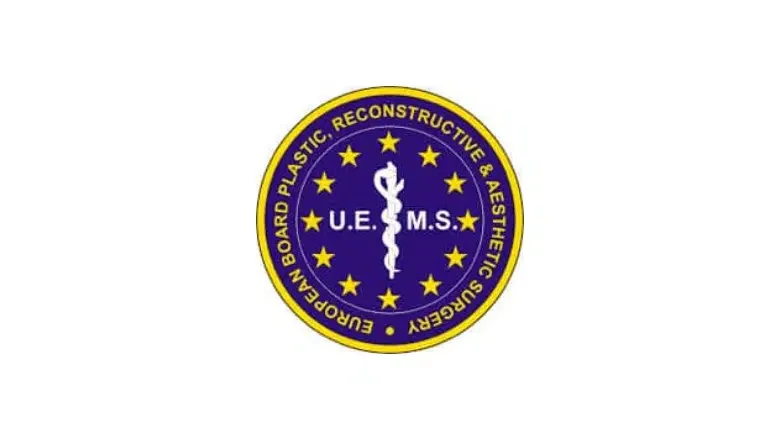According to recent statistics, the number of patients seeking treatment for ageing faces in the UK is on the rise. While non-surgical treatments such as laser therapies and injections are becoming more popular, facelift surgery, also known as rhytidectomy, remains the gold standard for achieving a natural and youthful appearance. In fact, over 10,000 facelift surgeries were performed in the UK in 2018 alone.
However, the abundance of non-surgical options has led to many misconceptions about facelift surgery. The aim of this article is to dispel common facelift myths and provide factual information for patients considering this procedure. Centre for Surgery is a specialist plastic surgery clinic in London renowned for being a centre of excellence for facelift surgery.
RELATED: Facelift Surgery FAQs & – Q&A about Rhytidectomy
Debunking the Gravity and Excess Skin Myth of Facial Ageing
Facial ageing is a complex process that involves more than just skin sagging due to gravity. While excess skin is a visible sign of ageing, it is only one part of the picture. The deeper tissues of the face, such as fat and muscle, also undergo changes, including loosening and descent. Additionally, the volume of the face decreases due to both bony and fatty atrophy. To address the multifactorial nature of facial ageing, modern techniques focus on repositioning these deeper structures and restoring volume.
Skin-only facelifts, which were popular in the past, often led to an unnatural, stretched appearance, and did not address the underlying causes of facial ageing. Instead, newer techniques aim to lift both the soft tissue and muscle while restoring volume to the face. For example, the deep-plane facelift involves elevating and resuspending the superficial musculo-aponeurotic system (SMAS) to reverse the effects of gravity.
Another innovative technique is the extended sub-platysmal facelift, which improves neck contour in a natural way. This method involves lifting the skin, fat, and muscle from the platysma muscle, which runs from the jawline to the collarbone. By repositioning these structures, the neck contour can be improved without creating an unnatural appearance.
Fat transfer is another surgical method that can be used to restore volume to the facial fat compartments. This involves taking fat from one part of the body and injecting it into the face to add volume and contour. Combining fat transfer with a facelift can provide optimal results to patients.
Age is Just a Number: Who Can Get a Facelift?
Contrary to popular belief, there is no ideal age for a facelift. While facial skin and underlying muscle can sag due to the natural ageing process, the effects of ageing can occur at any age. In fact, a significant number of facelift procedures are performed on patients between the ages of 40 and 54.
RELATED: What is the best age for a facelift?
However, younger patients are also seeking facial rejuvenation options to maintain their youthfulness. At Centre for Surgery, we have seen an increase in patients between the ages of 30 and 39 seeking forehead lifts and eyelid surgery to remove excess pockets of skin and fat around their eyes. These procedures are not full facelifts, but they are designed to rejuvenate certain areas of the face. This trend highlights the growing interest in maintaining a youthful appearance from an early age.
Early onset ageing can be caused by a variety of factors, including excessive sun exposure, smoking, poor lifestyle habits, and genetics. Additionally, everyone’s skin is different, and this can impact the severity of ageing.
We advise patients that the criteria for being “ready” for a facelift are: 1) Evidence of facial ageing that can be reversed with a facelift, such as jowls, neck skin laxity, or neck bands, 2) Realistic expectations about what a facelift can achieve, and 3) Good overall medical health and social support. A patient who is 42 years old may satisfy all of these criteria, while a patient who is 57 years old may not.
Non-Surgical Facelifts vs. Surgical Procedures: The Real Differences
While anti-wrinkle injections and injectable fillers have become increasingly popular in recent years, they cannot replace surgical procedures like a facelift. These non-surgical treatments can certainly improve the appearance of facial wrinkles and volume loss, but they do not address other signs of ageing that are best treated with a facelift.
Neuromodulators work by blocking the nerve signals that cause muscle contraction, thereby reducing the appearance of wrinkles. While this can certainly improve the appearance of the face, it does not address the loss of volume that occurs with ageing, nor does it correct loose skin, lost muscle or fat displacement.
Facial fillers, on the other hand, can help restore lost volume due to atrophy of soft tissue and fat volume that occurs with ageing. They can also reduce the appearance of fine lines and shadows, and add volume to certain areas, such as the cheeks and lips. However, the results of fillers are temporary and may not provide enough correction for certain signs of ageing, such as loose skin, jowls, and a sagging jawline.
In recent years, there has been a trend towards using fillers as an alternative to facelift surgery. While fillers can provide excellent results for certain patients, it is important to recognise their limitations. They are best suited for patients who may not be ready for facelift surgery or who want to maintain their results between surgical procedures.
Breaking the Gender Barrier: Facelifts for Men
The idea that facelifts are only for women is a myth. Men also experience facial ageing and can benefit from facelift surgery just as much as women. In fact, demand for male facelift surgery has been on the rise, increasing by 20% since 2000.
Facial ageing affects both men and women in similar ways. The loss of facial volume, sagging skin, and wrinkles are all common signs of ageing that can be addressed with a facelift. However, the surgical approach may differ slightly for men due to differences in facial anatomy and hair growth patterns.
Today, more and more men are seeking facelift surgery to improve their appearance and boost their confidence. As a result, the number of facelift procedures being carried out on men in the UK is increasing each year. In fact, some plastic surgeons specialise in male facelift surgery to ensure the best possible results for their male patients.
Beyond the Traditional Facelift: Exploring Different Types
The idea that there is only one type of facelift is a myth. In fact, there are multiple facelift techniques available, and the best method for each patient depends on their individual needs, facial anatomy, and goals for surgery.
RELATED: Different types of facelift and neck lift
One of the most effective facelift techniques involves repositioning the superficial musculoaponeurotic system (SMAS), which is a layer of tissue that connects the muscles of the face to the skin, also known as a SMAS facelift. The deep-plane facelift and the extended subplatysmal facelift are two examples of techniques that involve repositioning the SMAS to achieve a more youthful appearance.
However, it is important to note that facelift surgery alone may not be sufficient to address all of a patient’s concerns. For example, some patients may also benefit from a brow lift or eyelid surgery (blepharoplasty) to achieve a more complete facial rejuvenation.
In addition, each patient’s facial ageing pattern and characteristics are unique, and the surgical plan should be tailored to their specific needs. Factors such as the degree of skin laxity, the amount of facial volume loss, and the presence of jowls or neck bands should all be taken into account when planning a facelift procedure.
Facelift Recovery: Separating Fact from Fiction
The idea that facelift surgery is a long and painful recovery process is a myth. While it is true that traditional facelift techniques involve a longer recovery period and more discomfort, modern techniques have significantly reduced both.
RELATED: Facelift Recovery – top tips
With the deep-plane facelift technique, which involves repositioning the SMAS layer of tissue, recovery time is generally around two to three weeks. It is important to note that recovery time can vary depending on the individual patient and the extent of the procedure.
Pain after a facelift procedure is typically limited to the first few days, and patients are typically able to manage their discomfort with a combination of cooling, elevation, and pain medication. Additionally, taking care of the skin after surgery can also help to speed up the recovery process.
Many patients report feeling great after a facelift, and the improvement in self-esteem and appearance can outweigh any temporary discomfort during recovery. In fact, many patients are able to return to work and other normal activities within two weeks of their procedure.
Scarred for Life? Separating Facelift Facts from Fiction
The belief that a well-performed facelift leaves no scars is a myth. Like any surgical procedure, a facelift involves making incisions, which will leave scars. However, when an experienced and skilled plastic surgeon performs the procedure, the incisions are typically placed in natural skin creases or within the hairline, making them less noticeable.
RELATED: Facelift Scars: What to Expect after Surgery
While scars will never permanently disappear, they do tend to fade over time and become less noticeable. Laser treatments can also help to reduce the redness of scars and promote faster healing.
It is important to understand that the quality of the incision and the resulting scar can depend on a number of factors, including the patient’s skin type, the extent of the procedure, and the skill of the surgeon. However, with proper care and attention, most patients are able to achieve a successful outcome with minimal scarring.
The Truth About Facelift Longevity
The idea that a facelift is a permanent solution to ageing is a myth. While a facelift can certainly make a person look years younger, it cannot stop the natural ageing process of the face.
The results of a facelift are generally expected to last between seven to ten years, but this can vary depending on a number of factors. For example, a patient’s skin quality, sun exposure history, smoking habits, and age can all affect the longevity of the results. The technique used for the facelift can also play a role, with the deep-plane facelift having lower rates of revision surgery and thus giving longer-lasting results.
Genetics also play a significant role in how the face ages. If a person’s parents aged early, it is highly likely that the patient will also experience earlier signs of ageing. Additionally, factors such as overall health, diet, weight fluctuations, and skin type can all impact the outcome and longevity of a facelift.
It is important for patients to have realistic expectations about the longevity of facelift results and to understand that the procedure does not provide a permanent solution to the ageing process. Nonetheless, the benefits of a successful facelift can be significant, including improved self-confidence, a more youthful appearance, and a better quality of life.
Noninvasive vs. Surgical Facelifts: What You Need to Know
The belief that non-invasive facelifts can provide the same results as a surgical facelift is a myth. While there have been various devices marketed as being able to provide facial rejuvenation with no downtime or surgery, studies have shown that none of these devices can achieve the same results as a facelift.
Devices that use energy types such as radiofrequency, ultrasound, and infrared heating have been used to target the deep tissues of the face and theoretically “tighten” them for facial rejuvenation. However, these devices are typically best suited for patients who have minimal signs of ageing and may not be good candidates for a surgical facelift in the first place.
While there is no evidence yet that these devices can completely replace the need for a facelift in the future, they may be useful as an adjunct to a surgical facelift in certain cases. Nonetheless, the gold standard for treating jowls, neck skin laxity, and banding remains the deep-plane or extended subplatysmal facelift.
Facelift Surgery at Centre for Surgery in London
Facelift surgery remains one of the most popular and effective ways to rejuvenate the face and restore a more youthful appearance. While there are many misconceptions about facelifts, it is important for patients to have realistic expectations and understand the potential risks and benefits of the procedure.
Modern facelift techniques at Centre for Surgery focus on repositioning deep tissue and restoring volume to the face, resulting in a more natural, long-lasting outcome. Patients who are not ready for a facelift may benefit from minimally invasive procedures or injectables, which can help address specific signs of ageing.
Ultimately, the decision to undergo a facelift or any other cosmetic procedure is a personal one that should be made in consultation with an experienced and qualified plastic surgeon at Centre for Surgery. With the right approach and care, patients can achieve a more youthful, refreshed appearance that can enhance their confidence and overall quality of life.
RELATED: Is a facelift worth it?
Contact us today on 020 7993 4849, or complete the contact form below to schedule an in-person consultation with a specialist Plastic Surgeon at our state-of-the-art Baker street facility in Marylebone.













